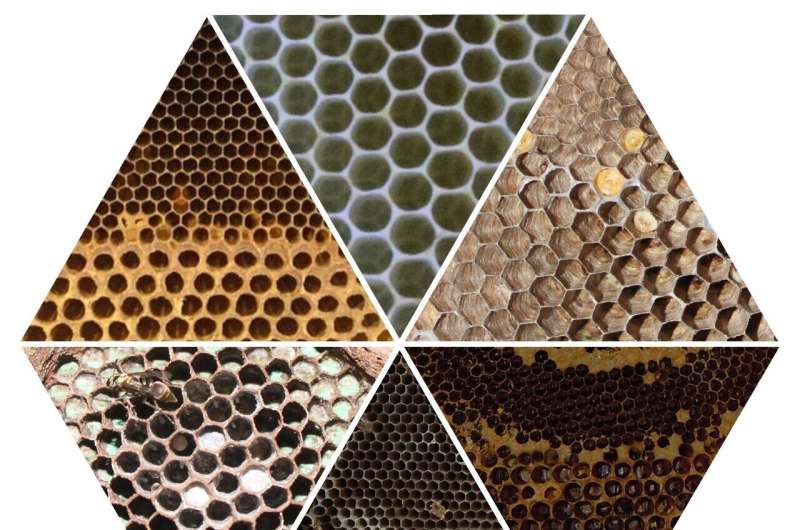Honey bees and social wasps build hexagonal cells using different materials and orientations. Honey bees use wax to construct double-sided vertical combs, while wasps use paper to build single-sided horizontal combs. In some species, worker bees and wasps face an architectural problem when they need to combine differently-sized hexagons within a single sheet of comb.
Researchers discovered that when faced with this challenge, both bees and wasps independently developed similar solutions. As the scale of the building problem increased (the difference in size between worker and reproductive cells), they incorporated non-hexagonal cells, mostly 5- and 7-sided, built in pairs. Moreover, they found that some species used intermediate-sized hexagonal cells to make a gradual transition, avoiding the need for non-hexagonal cells altogether.
Despite millions of years of separate evolution, distinct building materials, and independent origins of hexagonal cells, these insects arrived at the same architectural solution. This research highlights the remarkable ability of collective systems to build adaptive structures without centralized control, as hundreds or thousands of individuals contribute to the final product.
More information: Smith ML, Honey bees and social wasps reach convergent architectural solutions to nest-building problems, PLoS Biology (2023). DOI: 10.1371/journal.pbio.3002211
Find out how Bee Conservation have helped partner with companies to improve not only biodiversity and the environment, but also #staffengagement and wellness and the benefits in turn that has brought them - and how this could work for you. #environmental #biodiversity #conservation#sustainable #business as well as Social & Governance #ESG and Corporate Social Responsibility #CSR efforts.

